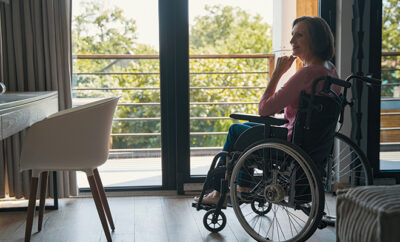
Transitioning to assisted living
Five years ago, it became increasingly evident that my mother-in-law could no longer live safely alone. She was exhibiting signs of forgetfulness, such as leaving the stove on or going for a drive and failing to remember the way home. We worried about her overall health and safety as one small accident led to another.
We knew it was time to suggest that she move to an assisted living facility. This suggestion was initially met with some rebuttal, as the first thought that came to her mind was the essential stripping of her freedom and independence. After that first conversation, all it took was some basic action steps to set the forces in motion; now my mother-in-law views the facility in which she lives as home and she wouldn’t have it any other way.
Once you have made this challenging decision with your loved one and you have found an assisted living facility that meets your loved one’s needs and with which you feel comfortable, numerous changes result. When you, your extended family members, the facility director and your loved one’s physician work together as a team, the move can be successful. It takes preparation, a supportive network, a lot of understanding, a heaping helping of patience and, above all, a positive attitude.
As you begin the prep work, decide who will be involved. It’s best to conduct a family meeting so that certain responsibilities of the transition can be delegated. Come to the table with a list of everything that must be done, including the requisite paperwork, cleaning out the house, packing and the move itself. Through it all, be sure to have someone keep an eye on your loved one and continually reassure her of all that is going on; include her not only in the dialogue about the move but also in the decision-making processes, to the extent that is possible for her.
As you delegate the responsibilities, decide who will oversee the packing, who will work with the movers and if storage is necessary. You may want to consider an estate sale. Yes, it will seem challenging and no, it won’t be easy, but maintain that positive attitude and ask for help when you need it. Always keep in mind that you are doing the right thing.
For your loved one, the lack of familiarity with both the environment and the other residents can be intimidating. Expect an adjustment period of one to three months. After all, she may have lived in her prior home for most of her life, so keep an open mind. Be sure your loved one understands the reason for the move and help her to prepare mentally for this well in advance of the move. For my mother-in-law, this preparation consisted of going through all of her belongings and deciding what she wanted to keep, what she could throw away and things she could donate. Once she had pared down her belongings, she actually felt a sense of relief. The next step was the move itself, which took just a few hours.
What would take appreciably longer, however, was the adjustment phase. The key factor in this area involves socialization. Initially, my mother-in-law had no interest in getting out and meeting the other residents. In fact, she chose to eat her meals in her tiny apartment instead of breaking bread with the others in the community dining hall. Although we respected her desire to adjust in this manner, we also knew it was imperative that she get out of her apartment and make new friends.
As your loved one deals with a range of emotions during this transition, you, too, may experience many feelings, most notably, one of guilt. Don’t feel guilty. Moving your loved one to an assisted living facility was not a decision made lightly, and it was made with the her best interest in mind; her health and well-being should be your top priority.
In addition to making sure your loved one makes new friends and truly feels a sense of belonging to her new community, it’s important that you continue to visit. Listen to her; communicate regularly with the staff. Join her for lunch or dinner on occasion or take part in a community activity with her. On the other hand, don’t visit too often, as that could diminish her sense of independence. Don’t feel as if you have to hold her hand all the time. Give her the freedom to reach out to others within the community on her own.
Provide the little touches to your loved one’s new apartment that will give a layer of warmth and familiarity. Hang family photos. Make sure favorite knick-knacks are on display. Anything that has personal meaning will help to assuage feelings of anxiety and discomfort as she adjusts to her new home.
We knew my mother-in-law had put her heart and soul into her new home when we called her one day and she was unavailable to chat. She was upstairs with the rest of the gang enjoying a movie night! HLM
Sources: agingcare.com and careconversations.org.







